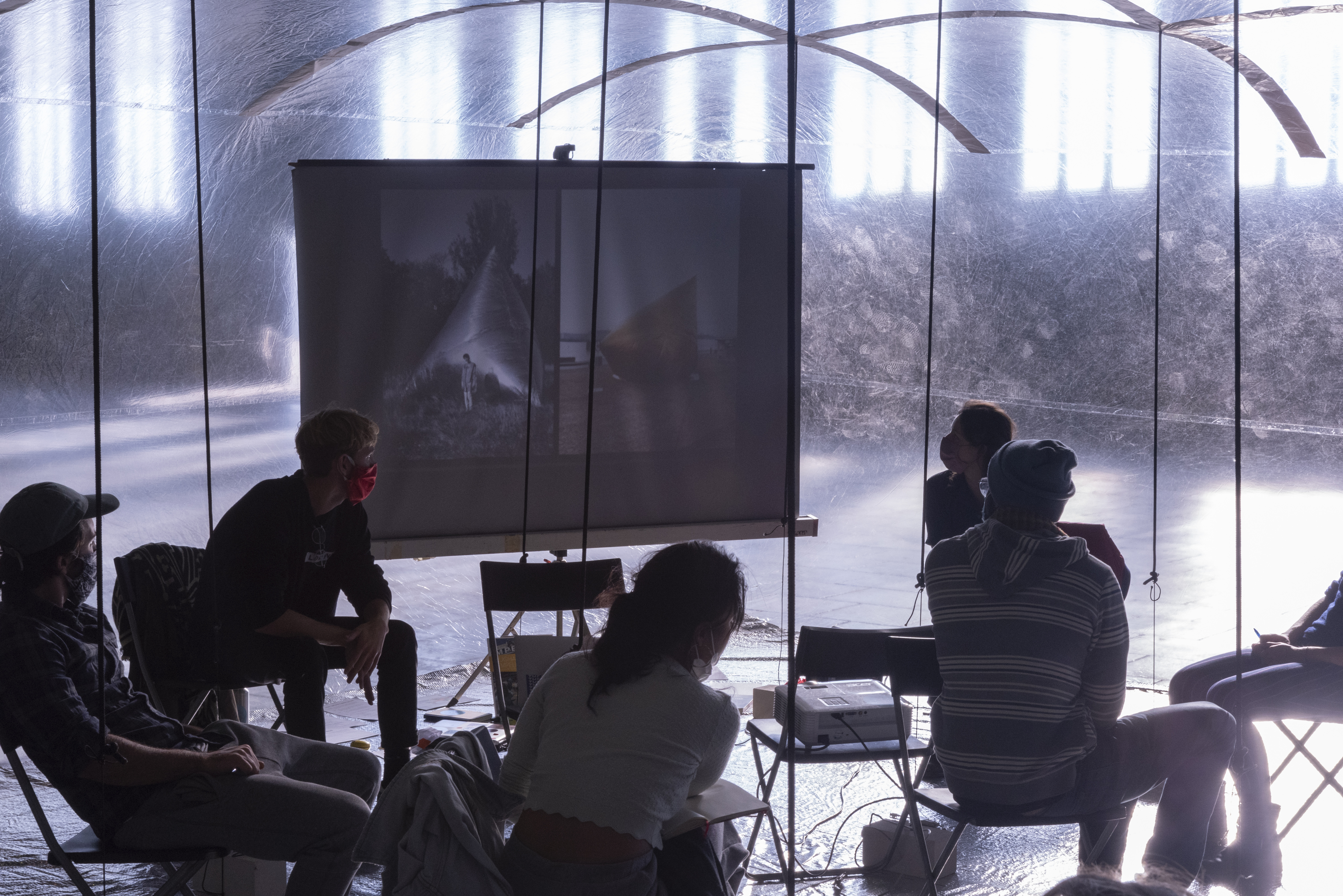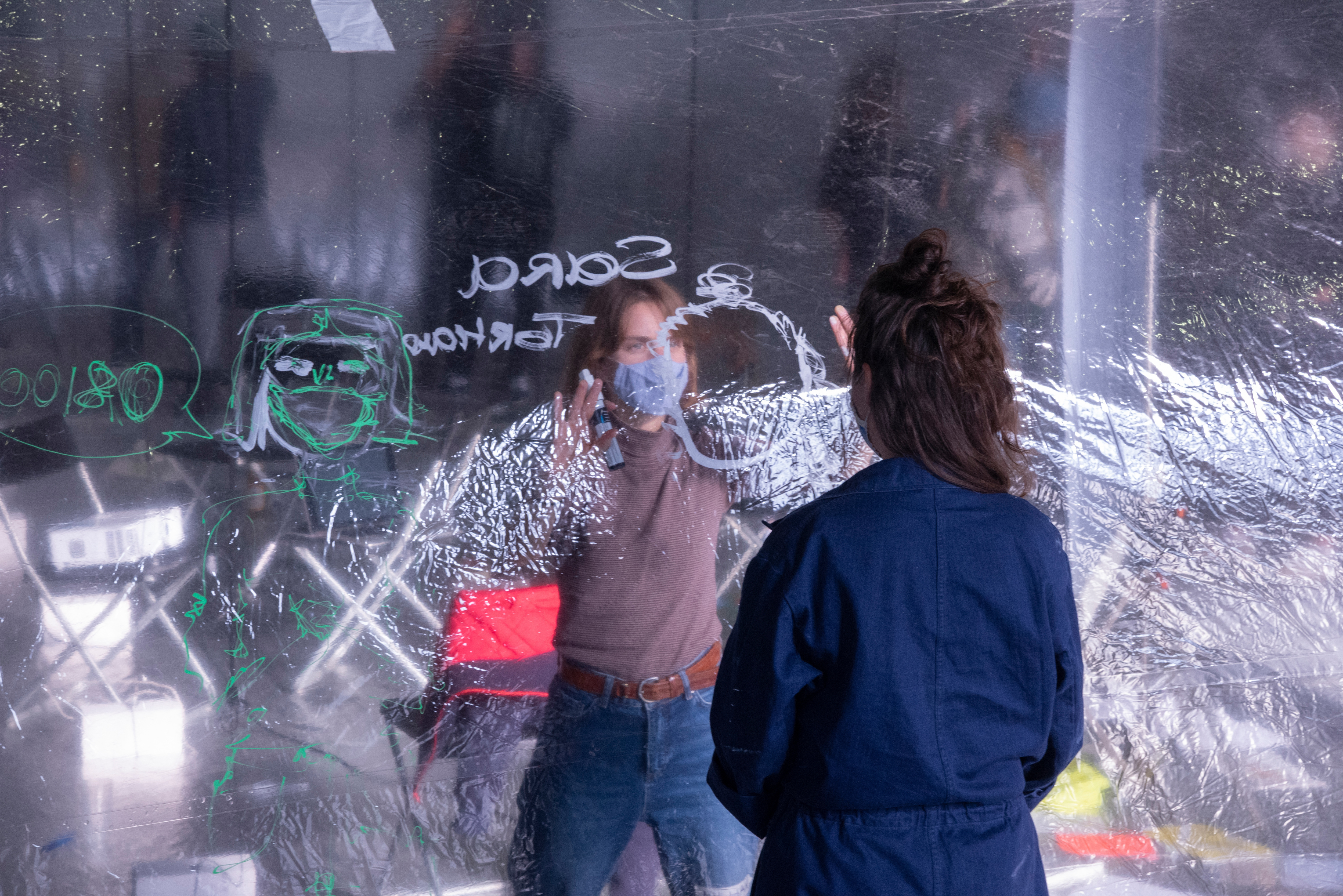CELLOGRAPH

Hangar X was an open call for practice by TORHAUS. It was collecting real and utopian space requirements for a 5.000 sqm, yet unused, hangar at former Tempelhof Airport in the center of Berlin.
With the Cellograph, which stretches voluminously and engagingly into the hangar, we offer a discursive space for ideation that helps to approach the area of the hangar. In the course of a two day-workshop, participants would discuss, draw and write on the translucent skin. Thus, the window becomes a canvas for temporary projections of the surrounding space.
Hangar X stands for the ongoing collective and cooperative development of the historic airport building Tempelhof Airport. Hangar X will be a place where actively and collectively discriminating and exploitative structures are recognized and replaced by structures and places of commoning and self-organization.
How can we take the design of our city into our own hands? Urban planning processes initiated by the citizens themselves often use their own unconventional tools to create spaces and dreams.
area: 100m2
material: transparent pvc foil, ropes, air
credits: The workshop took place on October 2020.
all images by Allegra Kortlang







